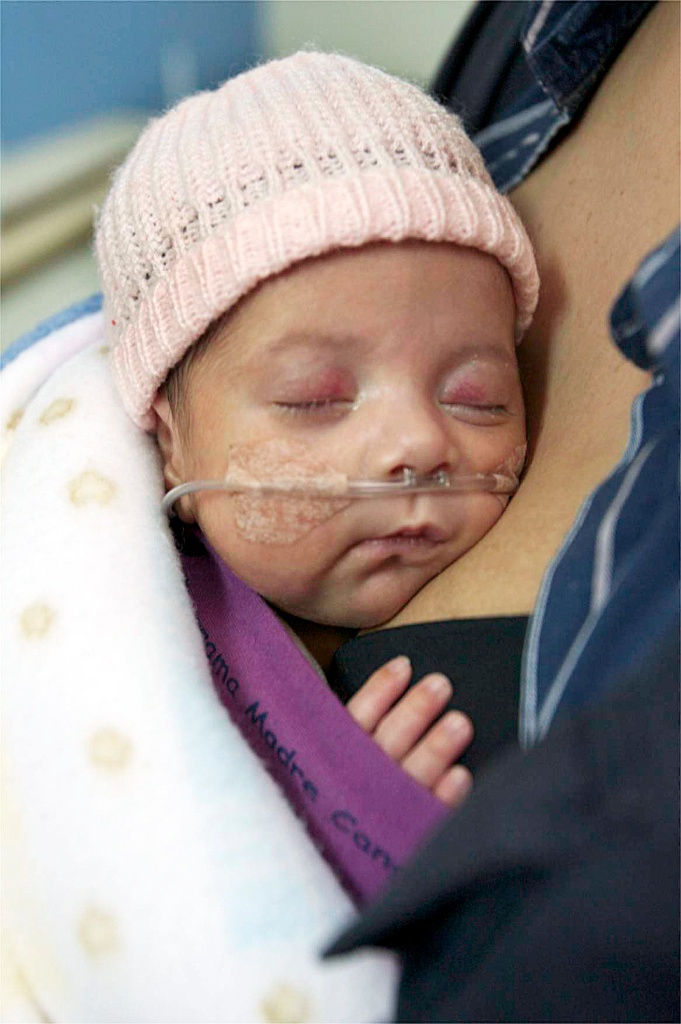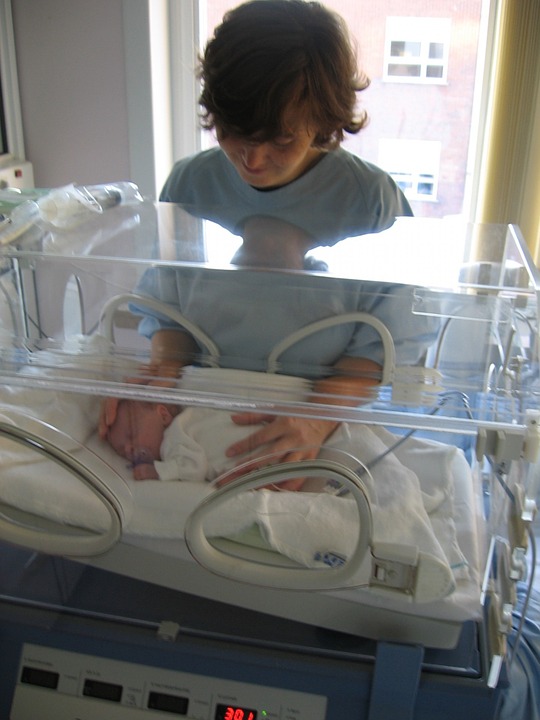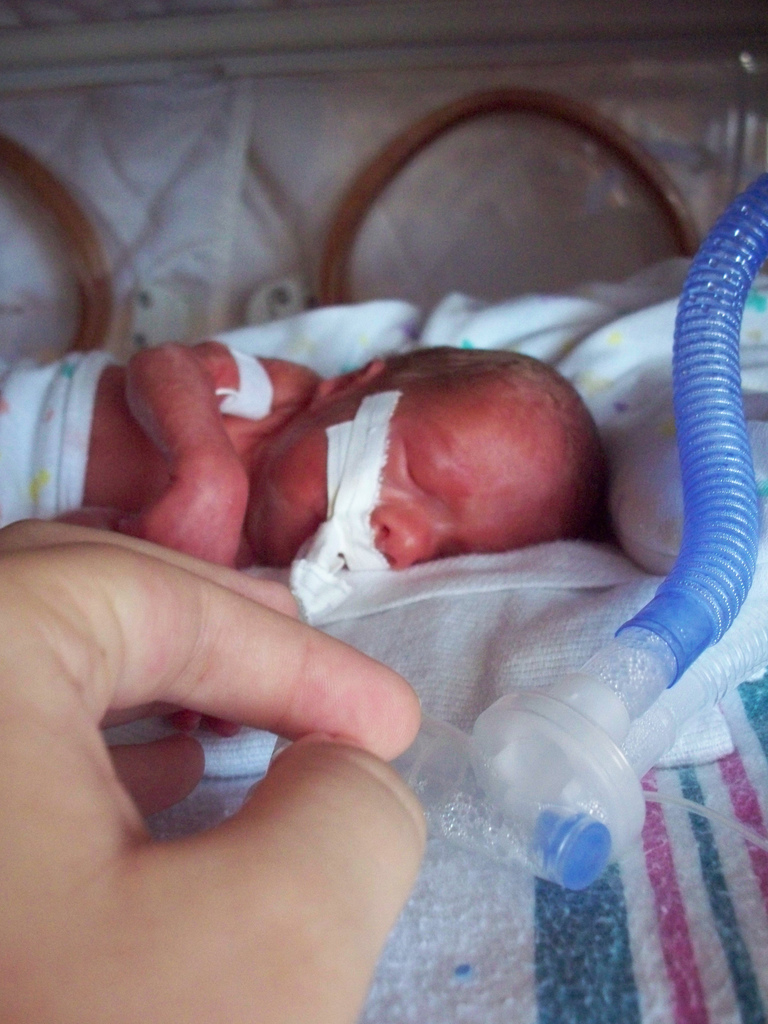 Touch develops early during pregnancy. However, premature infants can still be very sensitive to it.
Touch develops early during pregnancy. However, premature infants can still be very sensitive to it.
Your baby may not be ready for touch when they are first born. The first 72 hours after birth are a critical time for brain growth, and therefore it is important to give them space to develop. A sign with the letters “Critical Time – Minimal Handling” may be placed at the infant's bedside for the first 72 hours to serve as a reminder to all team members about the importance of minimal handling during this time.
In order to ensure minimal handling, the team attempts to provide most of the necessary initial care in the first hour or two of life. Following this, any additional interventions will be administered on an “as needed” basis.
What procedures may be done during the first 72 hours?
- One physical assessment will be completed at admission, following which only targeted examinations will be performed when deemed clinically necessary. Any further assessments that do occur will likely occur at the time as other scheduled interventions. In the first 72 hours, there will be no head or length measurement, no routine weights unless medically necessary, no routine head ultrasounds, or parent kangaroo care (although facilitated kangaroo care should be started as soon as possible post 72 hours). When changing diapers, infants will be gently lifted by the hips below the level of the head. All care will depend on the infant’s cues, and should not exceed 10-15 minutes at a time based on their ability to tolerate handling. Handling and positioning should always be done by two people.
Facilitated Tucking
- Avoid stroking or massaging your baby, as this can be over stimulating. Instead, cup your hands around the infant’s head and feet while providing pressure and containment.
- This is called “facilitated tucking”.
- This should be done during handling and for at least 5 minutes afterwards. It can be performed by either a caregiver or a parent.

You may also offer your finger for your baby to grasp, as this can help soothe and calm them (especially if you cannot hold them yet).

If your baby is healthy enough to be held, use “Kangaroo Care” (skin to skin contact) for the most soothing position for you and the baby. Hearing your voice, feeling your heartbeat, and feeling your touch will provide reassurance and comfort to the baby in Kangaroo Care.
Positioning
Infants may be positioned on their sides with their head and neck in a straight line with their body). It is best for the head of the bed to be elevated to 30° and for the infant to be in a flexed position. It is important to maintain this neutral head positioning (i.e. head and neck aligned with the body) when moving the infant.
Two people should always be there to position the baby in the first 72 hours.
Reference:
KGH Neuroprotective Protocol
Photo 1: Kangaroo Care. (Pan American Health Organization PAHO, Flickr CC)
Photo 2: CC
Photo 3: (Chris Sternal-Johnson, Flickr CC)